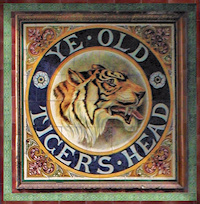Lee Green
Lee Green, Lewisham
Situated at the eastern end of Lee High Road, this was the original centre of Lee, which expanded north and west to meet Blackheath and Lewisham, and then south to Lee station

The Tiger’s Head public house was built in 1766 and became famous for its bowling green and notorious as a haunt of smugglers.
In 1809 the first semi-detached houses were built near the green and piecemeal suburban development continued until 1825, when shops appeared and the bridge over the Quaggy River was enlarged.
The new bridge allowed the river to flow more freely, reducing the risk of flooding, and over the following 40 years the village green vanished as the locality was intensely built up, mainly with small houses for labourers.
Some of the 19th-century housing was cleared before and after the Second World War in redevelopment projects, the largest of which was the mixed-use Leegate scheme.
Lee Green has a wider choice of shops and restaurants than might be expected with Lewisham such a short distance away.
At the 2011 census two-thirds of the ward’s residents classified themselves as white – a higher proportion than in most of the borough but down from three-quarters in 2001. More than 60 per cent of homes are owner-occupied.
Postal district: SE3 and S12
Population: 14,573 (2011 census)
